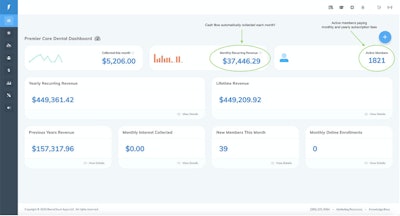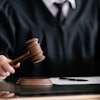
The way the world purchases products is changing -- and so are our business models.
Dental patients are increasingly looking for ways to streamline their purchases and make transactions easier. When it comes to software and online purchases, those transactions are more often moving to a subscription-based model, where patients put their purchases on autopilot so they can have continuous access to software-as-a-service (SaaS) products.
 Jordon Comstock.
Jordon Comstock.Subscription services are what customers want. Of people who shop online, 15% pay for at least one subscription and nearly 90% of businesses are looking for ways to adapt their online payment platforms so they can handle recurring subscription payments.
Subscription revenue is where a patient will sign up to get access to a product or service continuously and is charged the same amount either monthly or annually.
The most famous example of this type of service right now is Netflix. A customer pays a monthly subscription fee (starting at around $8) and, in return, he or she gets unlimited access to the 36,000 hours of movies, television shows, and documentaries on the streaming service.
With the Netflix example, it's easy to see why subscription services are becoming popular with online stores and software. A lot of the software and digital products we use online, we use continuously.
Tien Tzuo, the CEO of Zuora, which provides software for companies to manage their subscriptions, said, "Although the price of a subscription doesn't bring in the revenue that a one-off purchase does, retaining the patient and getting recurring revenue through a subscription wins out in the long run. Initially, costs go up and revenue drops after bringing a new subscription-based patient on board. However, after the initial costs of acquiring the patient have been recouped, costs go down, and revenue comes back up."
For a patient on a subscription cycle, the billing and transaction that takes place every month can be automated, since it will be the exact same amount.
"If you're not shifting to this business model now, chances are that in a few years you might not have any business left to shift," Tzuo said. "The reality is ownership is dead. Now it's really about access as the new imperative."
Advantages of using subscriptions as a revenue model
First, it creates a recurring payment cycle. Traditional business models are set up on the notion that patients will make singular purchases, while a subscription model brings in constant, consistent revenue.
Compared to singular purchases, subscriptions mean recurring payments are made to your practice. The plus side of this is that not only is each transaction smaller and more affordable for the patient, but your cash flow will be constant and consistent.
Second, it's easier to scale. When your practice is starting out, a traditional business model is easier when it comes to invoicing. A subscription model can streamline the entire postcheckout fulfillment process for every online purchase through your website.
Third, it creates better patient relationships. Why can subscription-based business models help you keep patients around? Data. Once a patient enters a subscription-based relationship with your company, you can then start to gather regular usage data from them and get to know them better. The more you know about your patients, the more in tune with their needs you'll be. Before you can make the jump to a subscription-based model, you need to know if your product or service will fit into what's required to make it work.
Make sure the move to a subscription revenue model is a success
The move to a subscription revenue model isn't easy, but it's worth it.
The first step to making a successful transition is proper planning. Understanding what subscriptions are all about, getting your pricing right, and figuring out what your patients want in your product are all crucial to making the switch in business models a success.
However, at the end of the day, the transition will only truly work if you're able to build a solid relationship with your patients. Unlike one-time transactions, it's up to you to show your patients that your product will continue to provide value over time.
Dental membership programs are the future of dentistry. The screenshot below shows a dental practice that is committed to a dental membership program and its growth after a few months.


Image courtesy of Jordon Comstock.
Committing to a dental membership program will assist your practice in becoming more profitable and easier to manage. You can download an e-book for more tips on a dental membership plan and how it can work for your practice.
Jordon Comstock is the founder and CEO of BoomCloud, which exists to help dental practices create, organize, track, and automate an in-house membership program as a strategy to reduce dependence on dental insurance and create recurring revenue.
The comments and observations expressed herein do not necessarily reflect the opinions of DrBicuspid.com, nor should they be construed as an endorsement or admonishment of any particular idea, vendor, or organization.



















